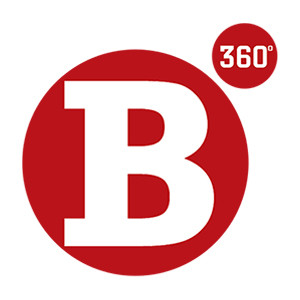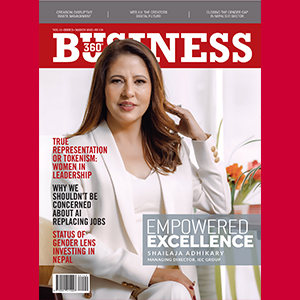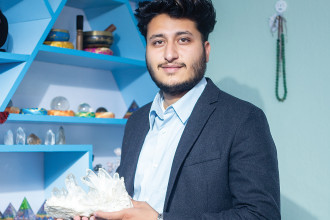-1744695387.jpg)
- Going beyond traditional methods with focus on innovation, efficiency, sustainability and resource recovery.
Aanand Mishra is the Founder and President of Centre for Research and Sustainable Development, Nepal - Creasion. A data driven non-profit, Creasion facilitates waste management, sustainable housing, scientific advancement, hands-on activism, action-oriented advocacy, recycling, safety training, and a myriad of community-oriented initiatives for social impact with the aid of volunteers, institutions and organisations.
Founded in 2005 as a volunteer’s coalition, Mishra transitioned Creasion from a volunteer-led organisation aiding communities to a data driven executor of massive projects funded by donors, post the 2015 earthquake. In 2019, the leaders at Creasion set a goal to innovate management of plastics in Nepal.
Mishra says, “It is our idea to call it the green circuit.”
“Most consumer goods that arrive in Kathmandu cross the southern border at Birgunj or Bhairahawa. These massive trucks arrive in Kathmandu bringing consumer goods from India and because nothing of that scale is generated in Kathmandu, most of these trucks leave empty,” says Mishra. “Thus, the green circuit starts in Kathmandu where annually around 800 of these trucks stop at our facility in Kapan to retrieve plastics separated from waste and make their way outside the valley at half their usual cost. We call this reverse transportation, one of our innovations, where these trucks take plastics collected in Kathmandu and at recycling centres established in collaboration with Creasion in various cities along highways and head to our facility in Chitwan, before returning to their point of origin,” he explains.
Twice a decade, the team at Creasion sets a vision and direction to direct their attention and effort through presentations and a meeting. In 2019, the team emerged with the goal to tackle material waste and plastics. Having invested time and labour in Nepal’s communities, Mishra observed how invaluable these routes to and from Kathmandu were, and the potential for optimising the use of essential fuel and emissions spent by numerous transport vehicles. Mishra’s team, the majority of which are recent graduates from Tribhuvan University and Kathmandu University, filed extensively researched proposals to international organisations to secure millions of dollars in funding.
Mishra mentions, “We have seven youth ambassadors handling our recycling facilities in this green circuit with a budget of around Rs 2 million each to involve the local community contributing to this facility. In Mugling, Sumitra Chepang is bringing the community together as our youth cohort, redefining waste management. In Dhading, Pooja Dallakoti, a young banker has opened her own recycling facility to aid Creasion in this mission.”
To work at Creasion Nepal is like attending university. Mishra states, “I make my employees write weekly reports reviewed by their supervisors to keep the lines of communication active, we have daily stand-up meetings over WhatsApp at 8 pm to ensure there’s no miscommunication the next day, and an office culture with rules that apply to everyone and employees learn how to prepare reports, run meetings, to deliver proper documentation, write proposals, and moderate their actions in communities away from this office.”
Over the last five years, Creasion raised funds, built infrastructure, imported machinery, set up an impressive material recycling facility, and established this green circuit. That takes resilience. “There are no shortcuts to this work,” says Mishra, adding, “We have worked day and night to fulfil our goal.”
The work has resulted in a lab tested, peer reviewed, scientifically backed, environmentally conscious and optimised recycling venture. Mishra speaks highly of Creasion’s Material Recycling Facility opening in April 2025. “Compare our material recycling facility in Chitwan to other waste handling facilities,” he says. “The World Bank approved our project and provided one and a half million dollars to set up a facility that costs two million dollars. Our facility is capable of processing 8,000 tonnes of plastic waste annually.”
“Why did the World Bank trust us? We have been everywhere, Mechi to Mahakali, assessing and auditing the waste situation in Nepal. Though we may not publish academic papers regularly, we have a Programme Development Unit where young minds are responsible for compiling this data into articles and reports that have been published on our local site and in journals,” he shares. Mishra adds that they have been in the field, in the market and compiled documents that the unit can cite with first hand data to present with their proposals in addition to extensively researched models for their green circuit. “Till 2019, we had recycled around 6,000 metric tonnes of waste, we had traceable documents detailing where we picked up waste and where that waste ended up. We have been advocating for this goal, an action-oriented advocacy approach,” he shares.
Concurrent to this project, Creasion’s roster of activities is extensive. Their flagship GreenShift Nepal project with Coca-Cola Nepal coincided with their vision to utilise the green circuit – Kathmandu, Naubise, Lalitpur, Hetauda, Bardibas, Dhading, Muglin, Chitwan and other major cities along highways running this route between Nepal’s essential rivers – Koshi and Bagmati – where trucks and transport vehicles move. Within this circuit, Creasion provides regional training to waste management workers, sharing safety standards and advocating for healthy working conditions.
At Creasion’s core is compassion for the Nepali community. “I want communication out of Creasion to be published in Nepali because I want communities outside of Kathmandu to also learn about circular economy,” says Mishra. “Because the data says they consume more instant noodles and biscuits wrapped in multi-layer plastics that needs to be recycled.”
“In Madhesh, Bagmati, and Lumbini provinces, we are working with local bodies, provincial lawmakers and the federal government to ensure plastics do not end up in landfills, polluting rivers and lining streets. From young school children to seasoned social workers, the GreenShift project is saving millions of rupees spent on importing plastics and saving dollars wasted on oil to get those products to the market.
“Nepalis and Nepali policy makers are not aware that there are seven types of plastics imported in Nepal. If we use terms like HDPE and LDPE, people will not understand us,” shares Mishra. So, they categorise plastics as good, bad and very bad. For plastics that cannot be circulated back into the market – the idea is to create a plant that processes recycled material into yarn, compressed multi-layer plastics mixed with sodium converted to sturdy tiles, reversible jackets in multiple colours, and a plywood alternative capable of building sustainable housing, furniture and other products; these things are not expensive and good for society.
“Discarded plastic has potential; to show its value is one our goals for 2025-2030,” he states. “Burning plastics is a hazard and without proper recycling we are stuck in a linear economy where Nepal will keep spending on importing more plastics.”
The World Bank approved our project and provided one and a half million dollars to set up a facility that costs two million dollars. Our facility is capable of processing 8,000 tonnes of plastic waste annually.
These initiatives are built upon the trials and tribulations of the last 20 years. Having left his salaried position to establish Creasion’s headquarters post 2015’s earthquake, Mishra reflects upon Creasion’s legacy. He says, “In the beginning my brother, Anupam Mishra, and I used to be in the office before the day started cleaning and setting up for the day. This is tangible work. No workshop, no seminar, no philosophical talk. Physical, concrete work like ‘please build a bathroom in this school, build a tap’. Because I may not know what ‘sanitise’ meant but I knew a school needs a bathroom. If the toilet is cracked, it needs a new one so the kids can use it. Toss the old bucket so the kids feel comfortable. This is how Creasion started. Anupam has worked from the shadows and I have built a team to turn Creasion into an organisation where anyone can come in and dedicate their time from anywhere in Nepal and the rest of the world.”
“The idea is to redefine non-profit and recycling. The work we are doing with 8,000 tonnes of plastic annually is circulating back into the market. We have set up a 10% Employee Stock Ownership Plan and the net profit after tax will go to Creasion. Today, USAID is closed, tomorrow the EU might follow, so we are working on making Creasion self-sustainable to ensure that the work never stops,” says Mishra.
“The work we do gives us a lot of satisfaction. Creasion gets the job done, keeps the donors happy, the beneficiaries have smiles on their faces and happy tears in their eyes, and the young team is happy. That is plenty of recognition. And we are just getting started,” he signs off.



-1744695387.jpg)
-1738136553.jpg)
-1735815016.jpg)
